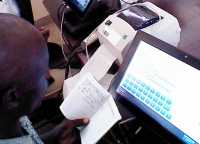
17 Sep Scribes Can Reduce Documentation Burden for Primary Care Physicians, But Cost is High
MedicalResearch.com Interview with:
Richard W. Grant MD MPH
Research Scientist III, Kaiser Permanente Division of Resarch
Adjunct Associate Professor, UCSF Dept Biostatistics & Epidemiology
Director, Kaiser Permanente Delivery Science Fellowship Program
Co-Director, NIDDK Diabetes Translational Research post-doctoral training program
MedicalResearch.com: What is the background for this study?
Response: Primary care in the United States is in a state of crisis, with fewer trainees entering the field and more current primary care doctors leaving due to professional burnout. Changes in the practice of primary care, including the many burdens related to EHR documentation, has been identified as a major source of physician burnout. There are ongoing efforts to reduce physician burnout by improving the work environment. One innovation has been the use of medical scribes in the exam room who are trained to enter narrative notes based on the patient-provider interview. To date, there have only been a handful of small studies that have looked at the impact of medical scribes on the provider’s experience of providing care.
MedicalResearch.com: What are the main findings? Did the scribes ‘pay for themselves’ in terms of increased productivity or were they an additional cost to the system? Were there malpractice concerns?
Response: We conducted a 12-month crossover study involving 18 primary care physicians from two different primary care practices within Kaiser Permanente Northern California. Participating physicians had use of medical scribes for 3 months at a time, in a randomly assigned pattern, so that all physicians had two 3-month periods of scribe alternating with two 3-month periods without scribes. Scribes were provided by an outside company. This was intended as a pilot study to investigate the impact of scribes.
Findings were grouped into self-reported and quantitative results. Participating physicians reported much less time spent after hours and week-ends completing their notes when they had use of a medical scribe, and much more time during visits interacting directly with the patient rather than the computer in the room. Patients had a generally positive view of visits with scribes present. These results highlight the documentation burden faced by physicians and the sense of relief they experienced with some of the progress note text being entered by a scribe. To complement these self-reported data, we also examined actual time spent using the EHR, which is automatically tracked. We found that while most measures were in the direction of favoring scribes, the only measure that reached statistical significance was closing notes within 24 hours.
Although the participating physicians valued the relief scribes provided to documentation burden, the cost of the pilot was high. Our study was not designed to directly address the return on investment question, although it would appear that for most systems, scribes would likely not pay for themselves through increased physician productivity.
MedicalResearch.com: What should readers take away from your report?
Response: Our results suggest that use of scribes may be one strategy to mitigate the increasing EHR documentation burden among primary care physicians, who are at the greatest risk for professional burnout. Use of scribes has potential drawbacks, including potentially inhibiting patients from discussing sensitive subjects with the scribe in the room. Also, quality of scribes may vary and many scribes may move on to other careers, requiring the physician to repeatedly establish a working relationship with a new scribe. Our study does provide strong evidence that innovations to reduce documentation burden, including virtual scribes and other perhaps less expensive technology-based solutions, should be actively pursued. Along those same lines, our study supports the idea that EHRs themselves should be redesigned with greater emphasis on the user experience (i.e. the physician workflow).
No disclosures or conflicts
Citation:
[wysija_form id=”3″]
[last-modified]
The information on MedicalResearch.com is provided for educational purposes only, and is in no way intended to diagnose, cure, or treat any medical or other condition. Always seek the advice of your physician or other qualified health and ask your doctor any questions you may have regarding a medical condition. In addition to all other limitations and disclaimers in this agreement, service provider and its third party providers disclaim any liability or loss in connection with the content provided on this website.
Last Updated on September 17, 2018 by Marie Benz MD FAAD

